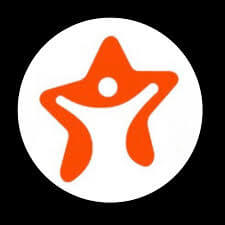How to ace almost any behavioral interview questions
You’ve made it past the recruiter and the first round of interviews. Now you’re meeting with the hiring manager. They’ll likely ask you a series of behavioral questions to evaluate whether you’re a good cultural fit for the team. They’ll also assess whether they believe you are up to the managerial and leadership challenges facing the role. Preparing for behavioral interviews can be nerve-wracking. The stakes are high, and it’s easy to feel overwhelmed by all the possible scenarios they could throw at you. I’ve spent over a dozen plus years of preparing folks for interviews and talking to people on the hiring side. As a result, I’ve developed an approach to behavioral questions that will help you shine in the behavioral interview. It’s all about ensuring that you start strong. The STAR framework and why it doesn’t quite work Many people use the STAR framework to structure interview responses. This method helps candidates describe their experiences to illustrate desired competencies. Start with “S” the Situation they faced, “T” their Task, “A” what Action they took, and “R” the Result they achieved. Now, this framework does help you organize your thoughts and distill a story to illustrate your experience and competencies. Unfortunately, this approach fails rhetorically because it lacks a strong start. When you lead with situations or context before getting to the task, the interviewer has to wait too long for the payoff. You risk losing the interviewer before you get to the action and results. An interview is like any presentation, you have somewhere around 30 seconds to hook your audience. Starting strong means a clear, concise statement of value that captures what kind of leader or manager you are. It also provides the interviewer a blueprint of what to listen for in your response. How behavioral interviews work Behavioral interviews are based on the premise that past experience is a predictor of future performance. The questions are generally less about getting the “right” answer. It’s more about helping the interviewer understand your approach, how you think, how you relate to others, and your values. As one hiring manager told me, “When a candidate explains how he or she thinks about solving a problem, I get a lot more insight into what it would be like to have them on my team than I do from them reciting the solution.” In my view, the STAR formula focuses too much on the story and not enough on the meaning. To borrow language from Simon Sinek’s Golden Circle model for organizations, interview candidates who strictly adhere to the STAR approach focus too much on the “what” and not enough on the “how” or the “why.” When you start your answer by naming the principles or values that guided your action, you get to the heart of the matter quickly. You also cue the interviewer on what to listen for as the story unfolds. How to prepare for behavioral interviews The STAR method is a good start to help you distill the narratives that illustrate your experience and competence. But to ensure that you have a strong start for each STAR story. Reflect on the foundational values that guided your actions. That might be empathy, accountability, collaboration, customer focus, data-driven decision-making, fairness, relationships, trust, or transparency. Articulating these principles will help establish what kind of leader, manager, or contributor you are. Examples of strong answers Once you’ve identified a set of 5–8 principles or values, you can use them to frame almost any answer. For example: Behavioral question #1 “Tell me about a time when you had to influence without authority.” “Influencing without authority was a key part of my role at ABC Company. There were three things I always tried to keep in mind: empathy for my cross-functional stakeholders, transparent communication, and relentless customer focus. On xyz project, as the product manager (situation) I needed to influence my engineering counterpart to commit to an aggressive timeline (task). I knew that her team was under a lot of pressure. I had a series of 1:1 conversations with her about the requirements. I made sure to listen with empathy so that I understood all her constraints (action). I also shared the potential customer impact of the feature. It turned out that her team had been expressing frustration about not feeling valued. So it was key that she could motivate her team to work on a more visible feature (action). We found some compromises and were able to land on a timeline that would be a stretch for her team but that she was excited about (result).” Here are some other examples of strong starts: Behavioral question #2 “What was a time when you failed?” “First, let me start by saying that in order for a goal to be meaningful, it needs to be beyond what you’ve done before, and so there is always a risk of falling short. The key is to communicate to stakeholders as soon as I k

You’ve made it past the recruiter and the first round of interviews. Now you’re meeting with the hiring manager. They’ll likely ask you a series of behavioral questions to evaluate whether you’re a good cultural fit for the team. They’ll also assess whether they believe you are up to the managerial and leadership challenges facing the role.
Preparing for behavioral interviews can be nerve-wracking. The stakes are high, and it’s easy to feel overwhelmed by all the possible scenarios they could throw at you. I’ve spent over a dozen plus years of preparing folks for interviews and talking to people on the hiring side. As a result, I’ve developed an approach to behavioral questions that will help you shine in the behavioral interview. It’s all about ensuring that you start strong.
The STAR framework and why it doesn’t quite work
Many people use the STAR framework to structure interview responses. This method helps candidates describe their experiences to illustrate desired competencies. Start with “S” the Situation they faced, “T” their Task, “A” what Action they took, and “R” the Result they achieved.
Now, this framework does help you organize your thoughts and distill a story to illustrate your experience and competencies. Unfortunately, this approach fails rhetorically because it lacks a strong start. When you lead with situations or context before getting to the task, the interviewer has to wait too long for the payoff. You risk losing the interviewer before you get to the action and results.
An interview is like any presentation, you have somewhere around 30 seconds to hook your audience. Starting strong means a clear, concise statement of value that captures what kind of leader or manager you are. It also provides the interviewer a blueprint of what to listen for in your response.
How behavioral interviews work
Behavioral interviews are based on the premise that past experience is a predictor of future performance. The questions are generally less about getting the “right” answer. It’s more about helping the interviewer understand your approach, how you think, how you relate to others, and your values.
As one hiring manager told me, “When a candidate explains how he or she thinks about solving a problem, I get a lot more insight into what it would be like to have them on my team than I do from them reciting the solution.”
In my view, the STAR formula focuses too much on the story and not enough on the meaning. To borrow language from Simon Sinek’s Golden Circle model for organizations, interview candidates who strictly adhere to the STAR approach focus too much on the “what” and not enough on the “how” or the “why.” When you start your answer by naming the principles or values that guided your action, you get to the heart of the matter quickly. You also cue the interviewer on what to listen for as the story unfolds.
How to prepare for behavioral interviews
The STAR method is a good start to help you distill the narratives that illustrate your experience and competence. But to ensure that you have a strong start for each STAR story. Reflect on the foundational values that guided your actions. That might be empathy, accountability, collaboration, customer focus, data-driven decision-making, fairness, relationships, trust, or transparency. Articulating these principles will help establish what kind of leader, manager, or contributor you are.
Examples of strong answers
Once you’ve identified a set of 5–8 principles or values, you can use them to frame almost any answer. For example:
Behavioral question #1
“Tell me about a time when you had to influence without authority.”
“Influencing without authority was a key part of my role at ABC Company. There were three things I always tried to keep in mind: empathy for my cross-functional stakeholders, transparent communication, and relentless customer focus.
On xyz project, as the product manager (situation) I needed to influence my engineering counterpart to commit to an aggressive timeline (task). I knew that her team was under a lot of pressure. I had a series of 1:1 conversations with her about the requirements. I made sure to listen with empathy so that I understood all her constraints (action).
I also shared the potential customer impact of the feature. It turned out that her team had been expressing frustration about not feeling valued. So it was key that she could motivate her team to work on a more visible feature (action). We found some compromises and were able to land on a timeline that would be a stretch for her team but that she was excited about (result).”
Here are some other examples of strong starts:
Behavioral question #2
“What was a time when you failed?”
“First, let me start by saying that in order for a goal to be meaningful, it needs to be beyond what you’ve done before, and so there is always a risk of falling short. The key is to communicate to stakeholders as soon as I know we are going to miss, take ownership of the failure, and use it as an opportunity for learning. An example of this is when I led a team in product marketing at xyz . . .”
Behavioral question #3
“How have you managed conflict within your organization?”
“Well, conflict is inevitable, and in my view, if it is handled with empathy for both participants while maintaining accountability for results, it can be an opportunity to learn more about each other and build trust and improve collaboration. The conflict I want to talk about was between someone who reported to me and someone on another team and was related to overlapping roles and responsibilities . . .”
The importance of principles
Once you have a strong list of principles, you can plug them into almost any behavioral question and nail the response. And if your interview is on video, you can write each of your values on a post and attach them to your monitor. This will act as a reminder to cue you during the interview. Then you can kick off any response with an articulation of your values and priorities. This will ensure that your interviewer gets a true sense not just of what you’ve done, but of how you approach problem-solving and what you stand for.























































































































![Are AI Chatbots Replacing Search Engines? AI vs Google [New Research]](https://www.orbitmedia.com/wp-content/uploads/2025/05/How-often-are-we-using-AI-chatbots_.webp)


































